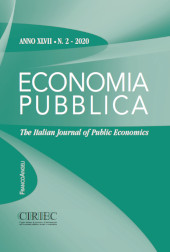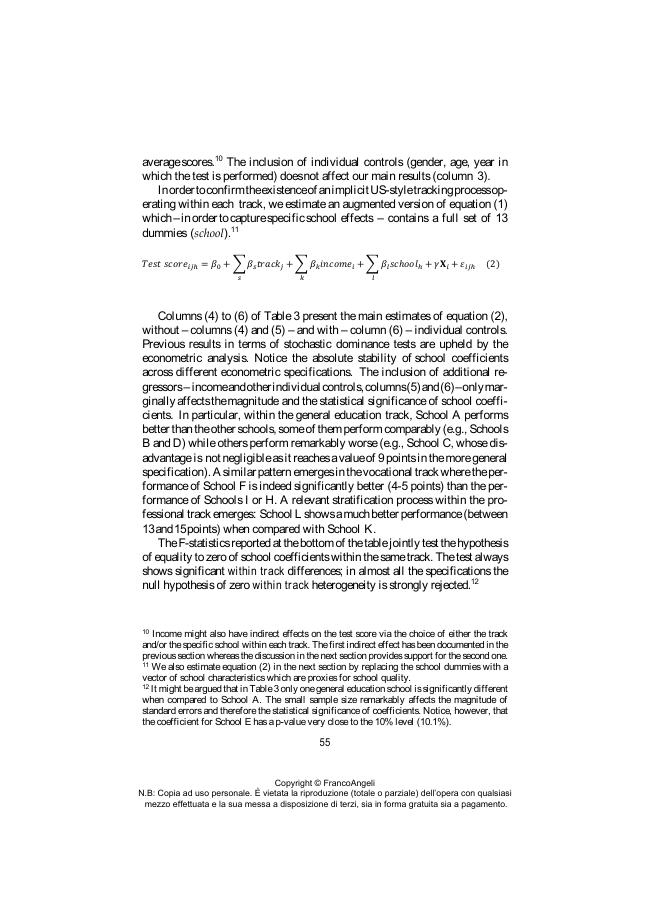Tracking in the tracks in the Italian public schooling : inequality patterns in an urban context
39-70 p.
We study whether, alongside with an explicit tracking system separating students in general versus vocational curricula typical in European countries, the Italian highly centralised public schooling is also characterised by another implicit tracking system, typical of the US, separating students mostly by ability and income within the same track. We pursue this aim by considering the municipality of Turin, a post-industrialised urban context in Northern Italy. We proxy students' ability and skills with the score obtained at the standardised admission test at the School of Economics and Business of the local university. We find evidence of heterogeneity across tracks and schools within the same track, which suggests that the inequality patterns common in the Italian schooling system are affected by both types of tracking.
We then discuss the potential sources of this US-style tracking, namely self-selection of better students in better schools, observed and unobserved school characteristics and income stratification. As for the role of income, we find limited evidence of residential segregation, but students from better socio-economic backgrounds travel more, exploiting information on school quality. [Publisher's text].
Forma parte de
Economia pubblica : XLVII, 2, 2020-
Artículos del mismo número (disponibles individualmente)
-
Información
Código DOI: 10.3280/EP2020-002002
ISSN: 1972-5566
KEYWORDS
- Public schools, educational inequalities, schools stratification, tracking, house prices, income segregation



